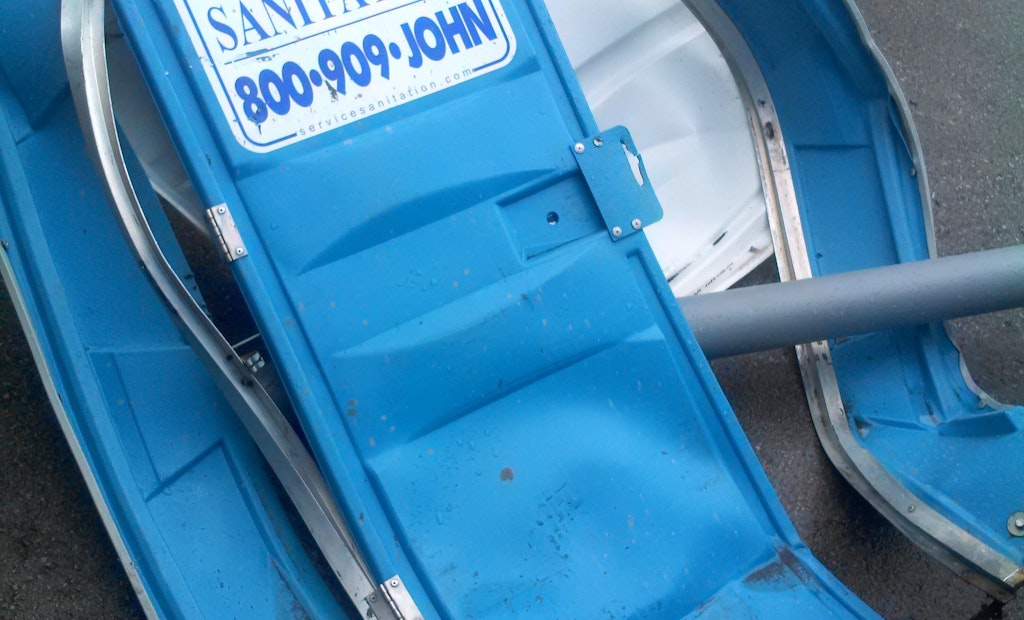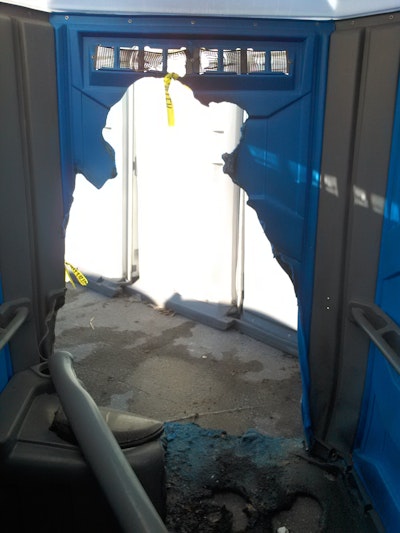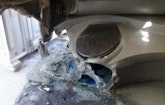
Interested in Portable Sanitation?
Get Portable Sanitation articles, news and videos right in your inbox! Sign up now.
Portable Sanitation + Get AlertsCan you imagine renting a car, running it into a tree and then not having to pay for the damages? Of course not. Yet there are still portable restroom companies operating without offering – or even considering using – damage waivers for their units.
That’s a move that not only can cost companies thousands in replacement fees, but also devalue the industry and its products and services.
“The intangible aspects [of offering damage waivers] apply to everybody, by presenting our business as something of value,” says Karleen Kos, executive director of the Portable Sanitation Association International (PSAI) in Bloomington, Minnesota. “[Waivers] help clients understand that this equipment is valuable.”
 Practitioners should consider the damage waivers discussion in the same vein as car rental services. “It’s assumed if the car is damaged, that it will be paid for,” says Kos.
Practitioners should consider the damage waivers discussion in the same vein as car rental services. “It’s assumed if the car is damaged, that it will be paid for,” says Kos.
But while there is little dispute that there is value for the seller in the waivers, there really is no magic trick for how to sell them. Kos believes the key is in how the option is presented to customers.
Service providers often start by determining customers’ needs (in terms of number of units, cleaning schedule, etc.), and “too often people stop there; they don’t move onto the second part of the conversation,” says Kos. That, she says, includes talking about the equipment itself, how it works, what they can expect from it and how it will be taken care of.
“Part of the discussion should be ‘How are we going to agree that any damage will be paid for?'”
That may include presenting a breakdown of how much various repairs or a replacement unit will cost – such as the cost of removing graffiti, replacing missing parts and the like. “Too often, people don’t have ‘Part B’ of the conversation,” she says. “The sale is not over until you’ve protected your equipment.”
Show your worth
Some larger companies, such as Johnny on the Spot on the East Coast, have links to FAQs about damage waivers right on their website, including rates, terms and even replacement costs for restroom units. The latter alone can be an eye opener for clients who might not consider how much it actually costs to replace a damaged restroom. Damage waiver fees can vary greatly depending on the size of the company and number of units.
Many larger companies are likely to use waivers, Kos says. “It’s their main business and they’re approaching it with that hat on.”
For the PSAI, promoting the use of damage waivers helps “raise public perception of the value of this industry,” says Kos. And that goes beyond educating just the public. Often, portable restroom companies need that reminder themselves.
“Sometimes people in the industry don’t realize minor changes in their approach can make a big difference in customers’ respect for the portable sanitation business,” she says. “If you come across professionally and behaving as though your equipment is valuable, that sends a strong message.
“If you begin there, it’s relatively easy to put business practices in place to carry that through to your customers,” says Kos.
Frederick Hill III, executive manager of Gotta Go Now! in Washington, D.C., does not use damage waivers. “I can’t see where it benefits me; for example, if I rent a unit to a construction company for $200 monthly and the damage waiver is $7.50 monthly, if in the first month they drive a forklift through the unit, I lose.”
The big picture
Kos notes, however, that company owners need to see the “bigger picture.” The pushback from some companies to offer waivers, she says, “comes when there is not an understanding of how it works … or how to present them constructively.”
Damage waivers are, basically, an insurance program for the company. Premiums are collected from those who purchase the waivers. Not everyone who purchases a waiver will have damage, and that money can be used to help cover any damages – even damages incurred by those who didn’t purchase waivers. Ideally, Kos says, more up-front damage waiver fees are collected than are needed to cover damages, creating a potential revenue stream for the company in addition to offering everyone peace of mind.
Sometimes companies include waiver language in their contracts, but then they do not enforce it. “There has to be a service contract that spells out everything,” Kos says.
Service Sanitation in Gary, Indiana, services all of Chicagoland with more than 12,000 units. They’ve been using damage waivers for more than a decade for all customers – special events and construction. While the waivers are offered to all customers, Service Sanitation does not use it as a high-pressure sales pitch.
According to Natalie Litera Jones, director of operations, “Service Sanitation instituted a damage waiver program as a means to protect our company’s assets and provide customers with financial peace of mind knowing that they are covered in case of damage to our equipment. Customers who have taken advantage of our damage waiver program have generated cost-savings for their company in cases of theft, graffiti, accidental damage by company employees or unit destruction.”
Customers often consider portable restrooms a “necessary evil;” they know they need them, but don’t really want to have to pay for them. Again, that can breed disrespect, and it’s up to the restroom company to dispel that image.
“Our industry is one that is not terribly well respected or viewed as valuable,” Kos says. She advises companies use transactions as a “teachable moment.”
“Our industry has not yet universally trained itself,” she adds. “Our stuff isn’t junk, it isn’t just sitting around. We need to teach people that we value it, so they should value it.”







